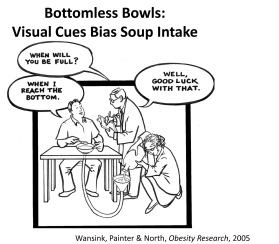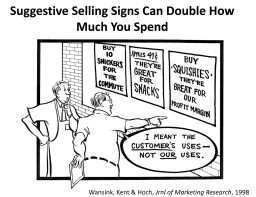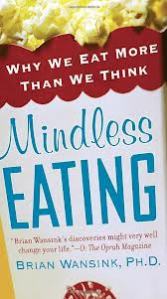This book was recommended to me by the person who heads the National Institute of Food and Agriculture (part of the USDA) based in DC. I am very fortunate I got to speak to Mr. Ramaswamy and I am equally fortunate he recommended this very well written and researched, immensely funny and possibly life (or at least weight) changing book.
I highly recommend it to anyone who wants to understand food and our modern eating habits either for informational or practical reasons.
Some of the more memorable quotes from the book are:
- The best diet is the one you don’t know you are on.
- Simply thinking that a meal will taste good will cause you to eat more. This is the concept of mindless eating.
- If we eat too little, we know it. If we eat too much, we know it. But there is a calorie range ~ or “mindless margin” ~ where we feel fine and are unaware of small differences… over the course of a year, this mindless margin would either cause us to lose 10 pounds, or to gain 10 pounds.
- When trying to lose weight, it is easier to change our environment, than our diet.
- We human beings eat with our eyes. We will eat lemon Jell-O turned red from food coloring and swear that we taste a cherry flavor.
- Words matter, big time: tack on the phrase “home-style” to anything, and it just tastes more delicious.
- It only takes a couple of healthy items on a restaurant menu to make us believe that all the food is healthy and low-calorie.
- Five common places to look (diet danger zones) include meals, snacks, parties, restaurants, and your desk or dashboard.
- “Cutting out our favorite foods is bad. Cutting down on how much of them we eat is mindlessly do-able.” The first bite of anything is almost always the best. The second is a little less, and so on.
- The clean plate gives us a set target to aim for so we don’t have to constantly ask ourselves, “Am I full yet?“… We can dish it out, space out, and eat until it’s gone.” ** Stop eating when you no longer feel hungry….not when you’re “full” or have “cleaned your plate”. **
- If people are offered an assortment with 3 different flavors of yogurt, they’re likely to consume an average of 23% more than if offered only 1 flavor.
- The more you think of a food (ahead of time), the more you’ll eat of it.”
Some of the tips he gave throughout the book to get healthier (also available on his website) are:
1. Focus on One Goal: such as snacking less, eating smaller meals, avoiding unhealthy foods. Use an expert’s help to confirm the goals.
2. Select Three changes: For each goal, set up to three habit changes to achieve this goal. For example if eating smaller meals is a goal. One related habit might be to chew more and make sure the meal lasts for 20 minutes. This will ensure you don’t gulp down a large meal in a very short period of time.
Make 3 small, 100-calorie changes, and by the end of the year we’ll be as much as 30 lbs lighter than if we didn’t make them.
3. Form a simple plan and execute it: to make these changes into habits. The site offers 30 day checklists for a whole year to help track these plans. Find a link for the 2015 plan here.
4. Modify the plan– as necessary to make sure it works for you. Maybe initially only once a week is possible, than 5 days a week and finally all seven days.




